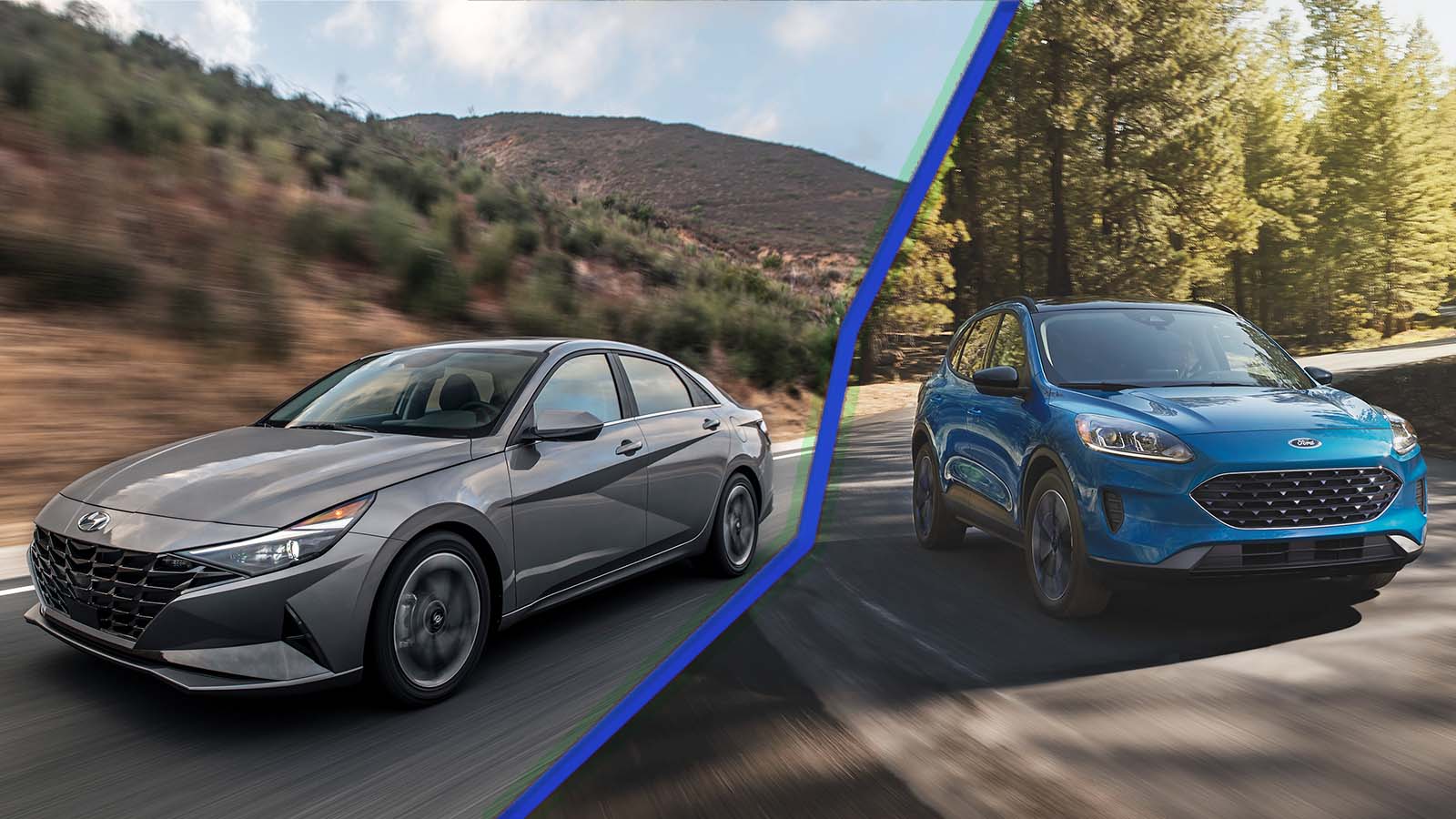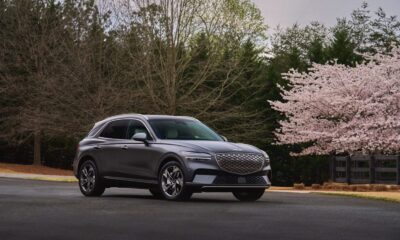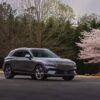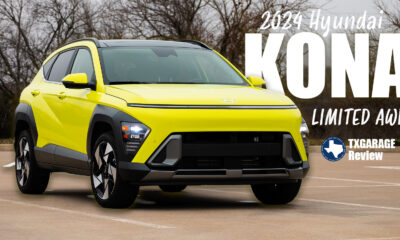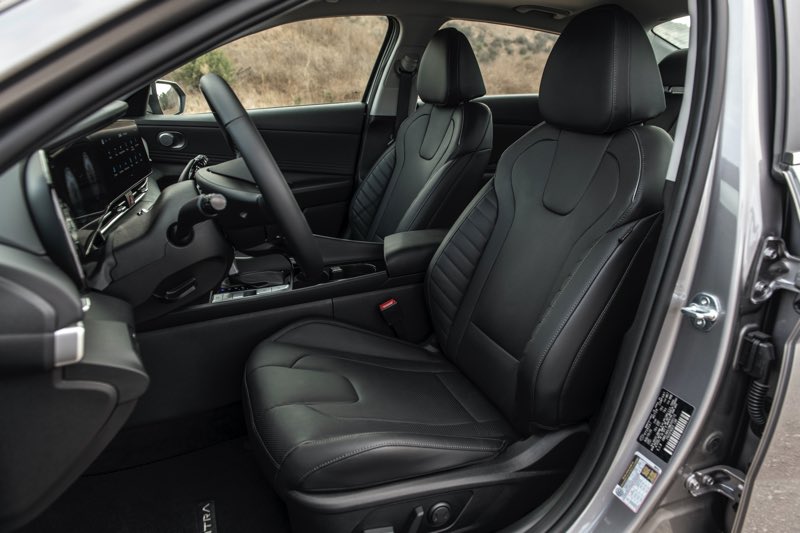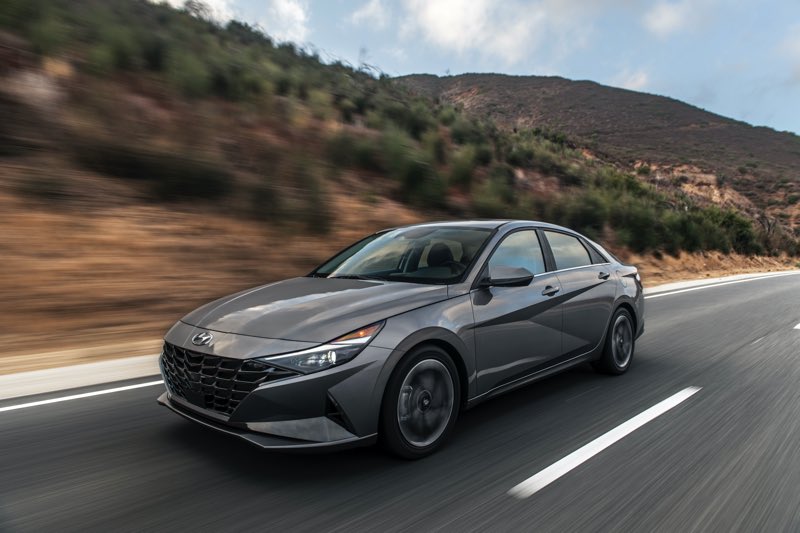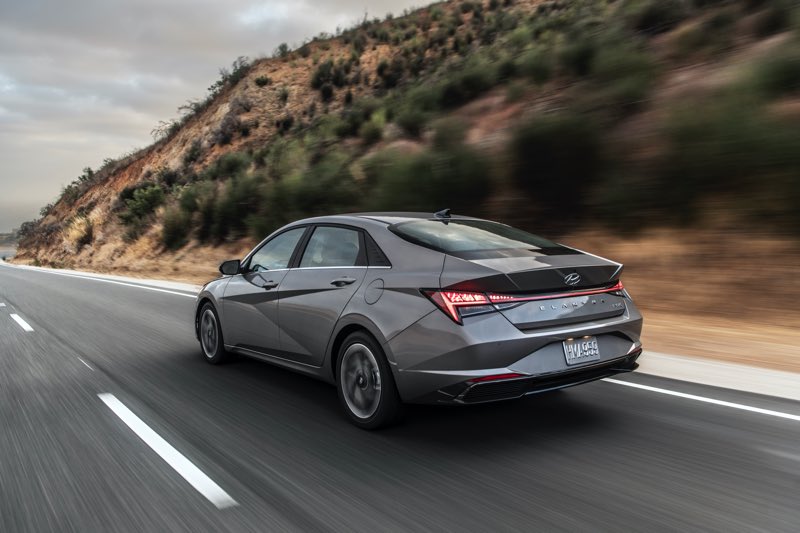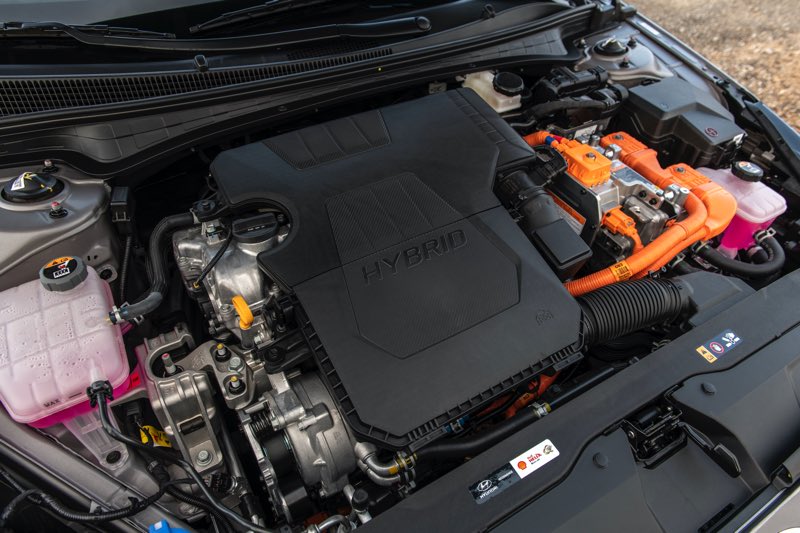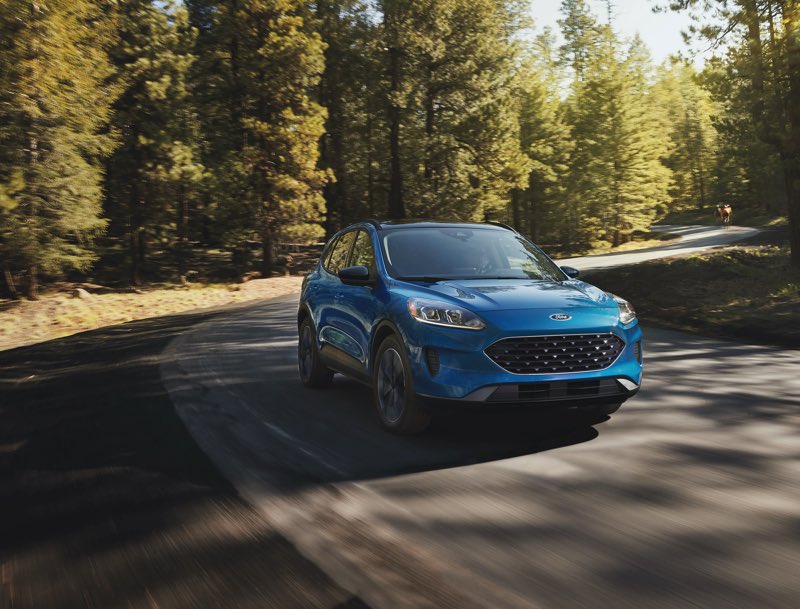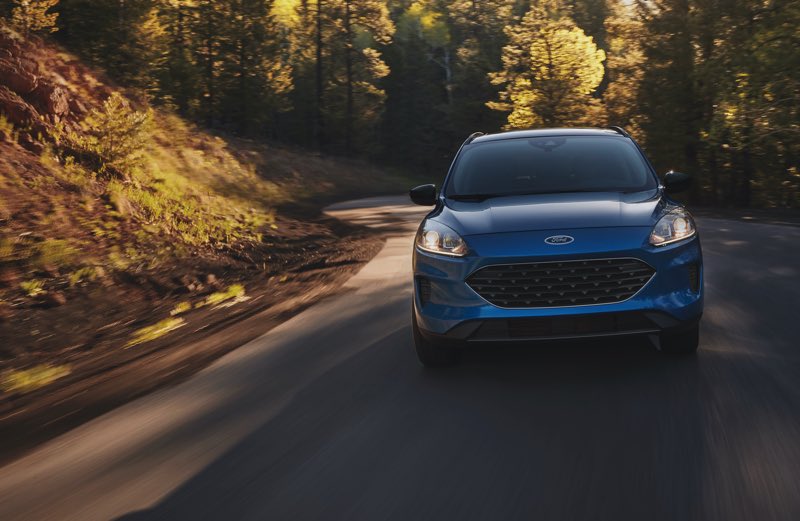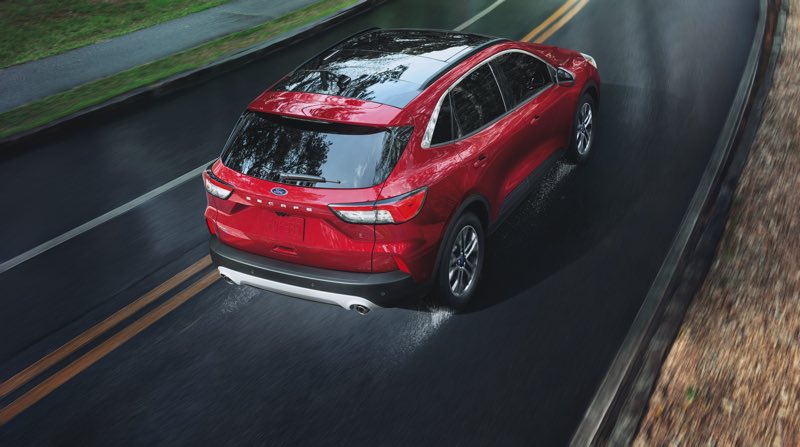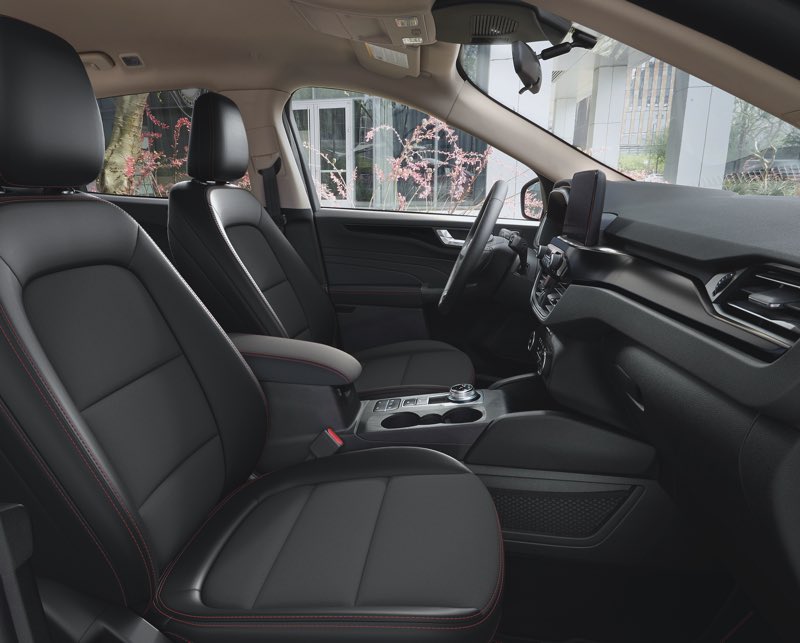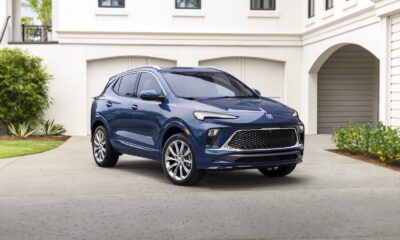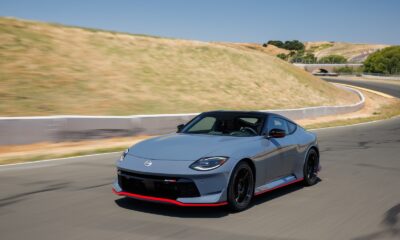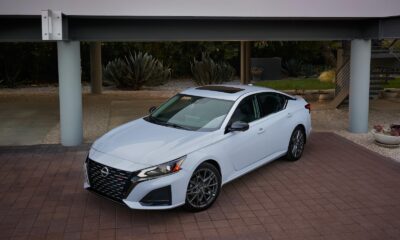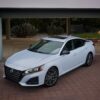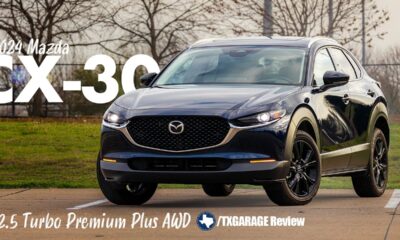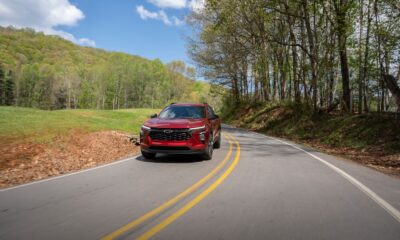Car Reviews
ESCAPE PLUG-IN, ELANTRA HYBRID ARE BOTH AFFORDABLE AND REFINED
No Reason to Pay High Gas Prices –
ESCAPE PLUG-IN, ELANTRA HYBRID ARE BOTH AFFORDABLE AND REFINED
I overheard someone complaining about gas prices. Really?
Around our house, we wouldn’t know. We’ve spent the last two weeks in the company of two affordable and remarkably refined electrified vehicles. Ford’s Escape plug-in hybrid and Hyundai’s Elantra hybrid are fast, smooth, and comfortable. The only thing we’ve done with gas stations is to drive past them.
“Electrified” is the correct term here because in today’s market there are three distinct types of propulsion systems that employ electricity, which means buyers have three options when trying to figure out the best way to burn less gas while avoiding being stranded somewhere with a dead battery.
An electric-only vehicle, like a Tesla and a smattering of vehicles from longer-established manufacturers, is referred to as a BEV, or base-electric. We’ve driven a few, like the Volkswagen ID.4, Chevy Bolt, and Kia Niro, and found all to be pleasant and remarkably fast.
These are nice cars that are much cheaper to operate and because they are infinitely less complex than fossil-fuel machines they will (potentially) last for decades.
The problem with BEVs, however, is that the nation’s charging system is in its toddler stage. It is up and walking, but not ready to run. There are roughly 43,500 charging stations across America, and that number will soon grow exponentially. The Infrastructure Bill contains $5 billion to expand that network and $2.5 billion to explore alternatives such as hydrogen stations.
This is in addition to billions already being spent by auto manufacturers and consortia of power companies and technology providers across the planet. Big issues confronting that effort include standardizing hardware and software and getting all that to work with the scores of new models coming from dozens of manufacturers in dozens of countries.
Having sat in on several recent online discussions among manufacturers and scientists, I feel comfortable telling you that some exceptionally bright people have their heads wrapped around these issues and that a functional, global charging network is just over the horizon.
Today’s charging network is centered around large cities. Those of us who live away from the megalopolises and travel great distances will occasionally find charging stations hard to find. Indeed, the folks who send me cars are reluctant to send out electric vehicles. Alas, I am forced to travel to events in distant cities.
The few charging stations we can find in non-metro areas were often put there by Tesla, the only carmaker that refuses to join the effort to standardize. Teslas will only recharge at Tesla stations. Everything else will recharge at anything but a Tesla station.
In addition to range anxiety, BEV owners must deal with wait times. BEVs typically take at least 30 minutes to recharge to 80 percent capacity. Superchargers can cut that time, but faster charging shortens battery life.
Universal adoption of BEVs, then, is a little further over the horizon, but not that far. A study released by Reuters this week estimated automakers will spend $515 billion – 100 times greater than what the government will spend – to develop BEV technology before the end of this decade.
That’s the thing about tidal waves. They don’t make a sound before they wash over you.
Hybrids proven technology
IF BEVs are the rumble in the distance, hybrid-electrics are the voice of experience. A hybrid vehicle is powered by a gas engine supplanted by an electric motor. Toyota introduced the first mass-produced hybrid, the Prius, in 1997. It now sells them in 90 countries, with Japan and the United States being the largest markets. Prius is now the first choice of taxi companies across the globe.
Hybrid drivetrains typically deliver about 33 percent better fuel economy than non-hybrid versions of identical models. The system has manifest advantages over internal-combustion-only engines (ICE). In hybrids, the gas engine is tuned to run on an Atkinson cycle.
Here’s what that means. Gas engines have four-cylinder strokes: down to draw in fuel and air, up to compress it, down when the vapor ignites and explodes, and up to push out the exhaust. On the compression stroke, Atkinson engine valves stay open just a tiny bit longer. Some of the gas-air vapor is pushed back into the intake manifold and used on the next cycle.
Less pressure in the cylinder means the Atkinson cycle engine doesn’t have to work as hard to overcome friction. That improves fuel economy. Running on less pressure appears to lengthen engine life, but so do two other things.
Most wear in an ICE occurs at start-up when gas vapor starts exploding before the oil has a chance to circulate. Hybrid drivetrains use the electric motor to spin the engine to running speed before starting spark and fuel.
The real advantage, though, comes in the symbiosis between the gas and electric power plants. Atkinson engines produce less power during initial takeoff and upon highway acceleration. That’s when the electric motor, which is pure torque, does its work. The gas engine, then, has an easy life, running at optimum speed or not at all.
As the owner of a 14-year-old, 150,00-mile, seven-seat hybrid that still runs like a scalded cat, gets 31 mpg, and doesn’t burn a drop of oil, I can attest: These things last forever.
Americans are starting to figure this out. Scores of hybrids are on the market today. While U.S. auto sales grew by 29 percent in the first half of 2021 – before supply-chain problems hit – hybrid sales grew 142 percent.
Elantra: near-luxury value
To understand why, one needs to look no further than the 2021 Elantra hybrid, the North American Car of the Year. For $29,260, delivered, buyers get a terrifically equipped, sweet-driving, fuel-sipping, technologically superb, roomy, and comfortable, four-door sedan. Oh, and she’s a looker too. Like everything coming out of Hyundai these days, the Elantra has bold and sensual exterior lines.
The cabin has a space-age feel with well-crafted, above-average materials. A 10.25-inch LCD instrument cluster next to a 10.25-inch touch-screen navigation system seems perfect for folks who walk around with devices in their hands. A sweeping LED light band across the dash wraps itself around passengers at night.
The interior is roomier than the Toyota Corolla, Honda Civic, and Nissan Sentra, It even has more passenger volume than many CUVs, such as the RAV4, BMWX2, and Mazda CX-3. We found the seats to be acceptably comfortable. Noise, vibration, and harshness are well managed. There is a perceptible sound difference between the gas and electric components, but even at low volume, the Bose Premium Audio system with 8 speakers and subwoofer cancels it out.
The list of standard features is impressive: heated and cooled front seats, wireless charging, automatic high beams, auto-dimming rearview camera, voice recognition, dual-zone and automatic climate control, power driver’s seat with lumbar support.
The Elantra over-delivers on driver-assistance gear, offering as standard equipment features for which other carmakers charge thousands of dollars.
Standard features include forward-collision-avoidance assist with pedestrian detection, blind-spot assist with rear cross-traffic collision-avoidance assist, safe exit warning, rear occupant alert, lane-keep assist, lane following assist, high beam assist, and driver attention warning.
Again, that’s for less than $30,000 before up to $7,500 in federal income tax credits. “Up to” means the government will cancel up to $7,500 of your tax liability in a given year. That amount may increase, but that is not a settled matter.
The non-hybrid Elantra gets a segment-best 37 mpg. The EPA estimates the hybrid model will return 50 mpg. Running up and down the roads of East Texas, we averaged 47.8 mpg. We found that the heavier hybrid version rides better and is quieter than the non-hybrid Elantra.
All Hyundais come with a 5-year/60,000-mile basic warranty and a 10-year, 100,000-mile powertrain warranty. The company provides free roadside assistance for 60 months and complimentary routine maintenance for 36 months.
Escape plug-in: 108 mpg
Now that she is somewhat retired, Blonde Bride and I are scheming some monster getaways: Vancouver, New England, Key West, and all the lands between here and there. We also feel a personal responsibility to do what we can to help the planet, like drastically reduce the CO2 coming out of our tailpipe. It turns out that this is easy to do and relatively inexpensive.
Because of range issues, charger availability, and recharge times associated with BEVs, we’re not sure one would be a great travel partner. Hybrids are a strong consideration, but we like the idea of a plug-in hybrid or PHEV.
This is a machine with a larger battery than a regular hybrid and with the capacity to be recharged, usually overnight by way of a 110V outlet. You know, plug it into the garage and go to sleep. One does not get the 200- to 300-mile range of a BEV. But, for less than the price of an iced tea, one gets 35-40 miles of all-electric operation, enough to go to work and run errands.
There are at least 35 PHEVs available in the U.S. We recently had our hands on one of the best, the Ford Escape PHEV. Ford, which licenses its hybrid technology from Toyota, has sold electrified vehicles for more than 15 years, including the well-respected Fusion Hybrid.
The Escape, a popular seller, has suffered from sub-par reliability for most of the last decade and consequentially does not get high scores from the various rating services. Consumer Reports, for example, ranks it 17th out of 24 compact sport utility vehicles. The class-leading Subaru Forester earned a score of 89, while the Escape graded out at 46, despite scoring in the upper quartile in handling, acceleration, and braking.
I usually agree with my experienced, esteemed, and well-trained peers at Consumer Reports but, frankly, this rating seems unfair. Based on prior years’ performance, the 2021 Escape earned the lowest possible predicted reliability score.
Here’s the thing, 2020 was an all-new model. New parts. Different engineers. Retooled factory. Different engines. Different transmissions. I understand the quantitative reasoning here, but the past is not always prologue. Absent data, one must also consider qualitative factors.
Thirteen months ago, on his first day on the job, Ford CEO Jim Farley, who cut his teeth at Toyota, told the troops that Ford had to reduce warranty costs, which is a nice way of saying, quit building crummy SUVs and trucks.
We inspected, crawled through, poked, prodded, and put the Escape PHEV through its paces. Our impression? Farley got his way.
This CUV feels like it is put together right. It is tight and solid. In nearly 24 months of production, it has had only one recall, for a batch of defective fuel delivery modules provided by a third-party vendor. For a clean-sheet redesign of a high-volume product, that is not bad.
We think the exterior, though curvier and somehow more generic wedgelike, still looks too much like the Escape of old, but Ford knows its buyers better than us. The interior is sweet, with sort of a BMW vibe: Nice, if plasticky, materials, excellent fit and finish, crisp design, facile user interface.
Push the start button, and it is instantly apparent that the Escape PHEV is like no Escape before. The ride is among the best in this class. Handling is crisp, even playful, especially in sport mode. Pushed well beyond the legal limit, the Escape stays well-planted entering curves and flattens out nicely under throttle through the apex.
Vehicles in his class have a short wheelbase and engineers walk a fine line balancing control and comfort. Ford’s engineers did as well as any. The ride is firm but comfortable enough not only for Beautiful Bride but for her lovely mama, Ruth. They were impressed, and these ladies, who keep a sharp eye on everything, don’t impress easily.
The real test of this machine comes when the throttle is mashed down. Acceleration is strong and silky, with very much a luxury car feel. Braking is strong; indeed, the Escape is the only hybrid in production to have the same stopping distance as its non-hybrid counterparts.
This is unusual because hybrids are heavier and, to increase fuel economy, manufacturers fit them with low-rolling-resistance tires. Typically, for example, a Camry hybrid going 60 mph requires 10 feet more stopping distance than a regular Camry. Ford engineers somehow dialed in the Escape’s brakes to overcome those things. Nice job, Ford.
Start the day all-electric
One of the Escape’s best features is its ability to deliver about 37 miles of electric-only driving. All we had to do was let the car charge overnight, which adds less than $1 to the electric bill. We plugged it into the same garage outlet that powers a refrigerator, freezer, and, on cold nights, the space heater for the cats.
In electric-only mode, the car gets infinite mpg. Make it go fast and the gas engine fires up. In hybrid mode, the EPA says the Escape gets 40 mpg. The agency also figures that between electric-only and hybrid driving, the average Escape PHEV driver will average 105 mph.
Of course, this is a multivariate, piecewise equation and every driver’s situation is different. Blonde Bride and I figure that with a PHEV, we will go months without buying gas. That is why, when the supply chain finally fixes itself sometime in mid- to late 2022, we plan to buy one. It will probably be larger than the Escape.
In the first six days that we had Ford’s cute-Ute, we mixed a little Interstate cruising with a lot of city driving – shopping, going to church, taking Ruth to the dentist, going to school – and averaged around 237.4 mpg.
Then Boy Wonder convinced me to take ‘er out to an undisclosed location for some full-throttle testing at undisclosed speeds. We were so impressed we had to turn around and try it again. That brought our average for the week down to 108.3 mpg. When the nice man from Ford came to retrieve her, she still had more than ¾ of a tank.
High gas prices, you say? Really?



